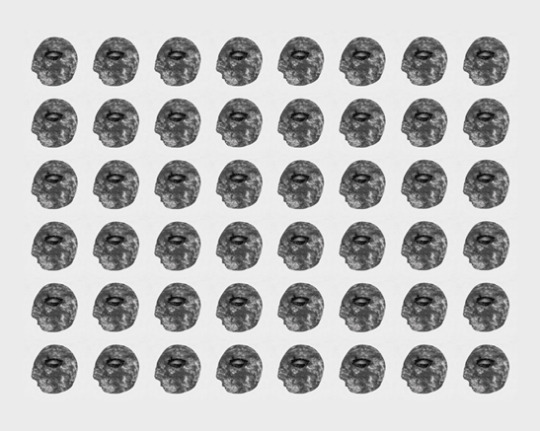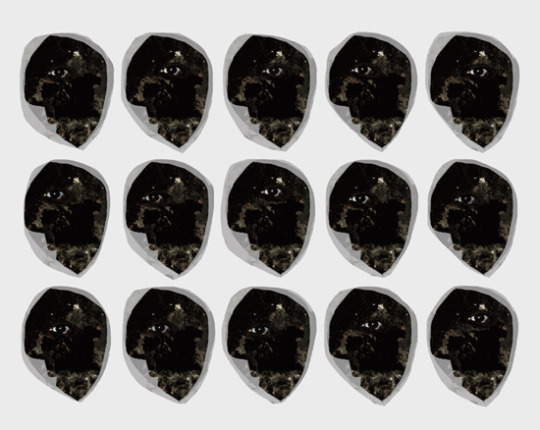Photo
Iraqi artist Wassma’ Alagha has passed away today in Amman, where she has been residing for the past several years. Under such heartbreak we cannot condole ourselves but through commemorating her memory in artwork.
May she rest in peace.

Yearning and Meeting (2007) شوق و لقاء
Iraqi Artist WASSMA ALAGHA وسماء الأغا
2K notes
·
View notes
Link
Sada was founded nearly five years ago to support young, college-level art students in Baghdad. This generation of artists is living in a city that has been, and continues to be, an epicenter for international violence through division of its citizenry and destruction of infrastructure by the Iraqi government, the United States, and their allies. With the ravaging of the city’s arts and education systems, it was Sada’s aim simply to connect artists to resources. We did this through online lectures with Arabic-speaking artists and professors, intensive workshops, one-on-one advisement, advocacy, and small production and exhibition grants.
Sada will be suspending its work as a formal project. Traveling to Iraq has become too dangerous, proper oversight has become increasingly difficult and obtaining the kind of security needed for Sada’s activities would require working with members of the government and their supporters. This would be anathema to our mission considering the reality of corruption and context of warmongering. Those who are responsible for and profit from a country’s undoing also sponsor, applaud and exhibit works produced from the wretched conditions they themselves have helped sow. These endeavors are supported by an array of curators, arts writers, and financial and public relations systems that comprise the arts industrial complex..
48 notes
·
View notes
Photo
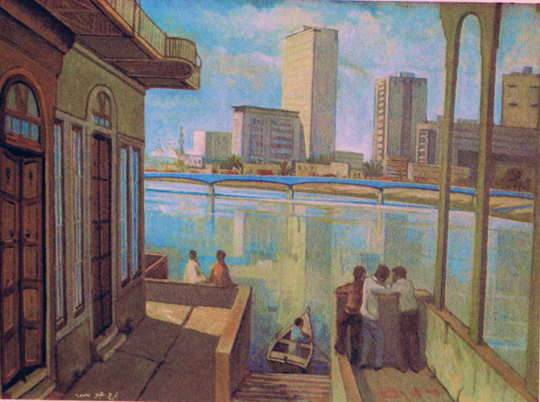

A Scene of Tigris and Baghdadi Architecture (1977)
Iraqi Artist FARAJ ABBO
606 notes
·
View notes
Photo
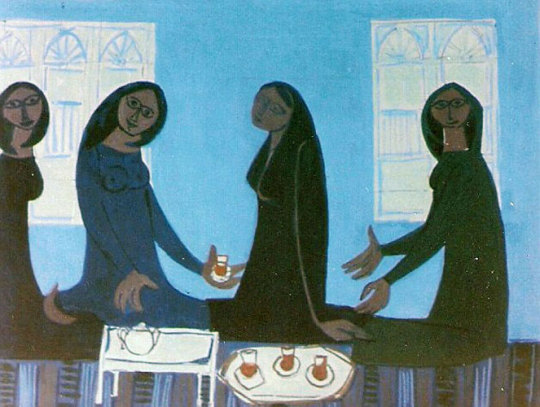

جلسة نسائية و جلسة شبابية Women and Men Get-Together/Session (1960s)
Iraqi Artist FARAJ ABBO
2K notes
·
View notes
Photo

Nationalization of Oil (1972-1976) - Iraqi Artist FARAJ ABBO
This painting was in celebration of the nationalization of the oil industry that occurred in Iraq under the government of Ahmad Hassan al Bakr in 1972. The nationalization of oil movement started under Abdul Kareem Qasim’s government when he issued laws that limited the operations of foreign oil corporations in 1961 to only those fields that have already started working, and disallowing any form of expansion. Between 1964-1966, Abdul Salam Aref’s government formed the “Iraq National Oil Company” which overtook all the operations of Iraq’s Petroleum Company (IPC); a foreign corporation despite the name, owned by Shell, Exxon, Total, BP, and Partex.
96 notes
·
View notes
Text
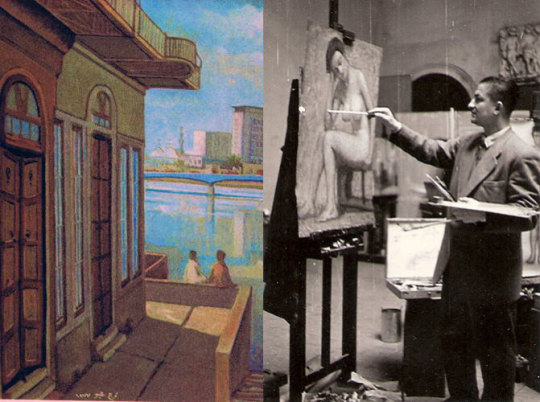
Probably one of the few painters who is always seen wearing a suit in every photograph taken in his studios while painting, Faraj Abbo (1921-1984) was an Iraqi painter who was born in Mosul in 1921 and passed away in Baghdad in 1984. Abbo’s artistic talents began to become evident at the young age of 13 when he was commissioned to produce paintings for local churches in Mosul; such as the one seen in Mar Eshai Church. Four years following the completion of secondary school education in 1939 Baghdad, Abbo joined the Friends of Art Society, and was an instrumental teaching member at multiple Teachers Centres across Iraq. The Friends of Art Society was first established by Iraqi painter Akram Shukri as a collective that paralleled the European art societies he was directly involved with in England, and indirectly by the major influence of Polish artists in Baghdad during the WWII period (x). Faraj Abbo then travelled to Cairo where completed a BFA in Painting from the Academy of Fine Arts in 1950, which was then followed by a period in Rome, Italy where he received an Honors Diploma in Fine Arts with highest distinction in 1954. Upon his return to Baghdad, Faraj started teaching at the Institute of Fine Arts and became the head of the Department of Plastic Arts at the Academy of Fine Arts in Baghdad University. He also spent a few years teaching free-hand sketching at the Engineering College at Baghdad University. The 1950s period was marked by the formation of Al Rowad Arts Collective; an artistically distinctive collective that included figures like Jawad Salem and Faiq Hassan, which one could argue came as a response to the Friends of Art Society, with which Jawad Salem was in constant rift according to some sources (x)
Faraj’s artistic style is one with a fluctuating nature due to his exposure to different movements across the globe, particularly in Russia, to which he had travelled to on his motorbike from Iraq. As mentioned earlier, prior to his travels to Russia, he first joined the Friends of Art Society in 1944, whose members were highly influenced by Russian painters at that period, adhering to a characteristic figurative and symbolist approach. During the 1970s, Faraj Abbo’s art began to depart from realism and instead adopted a very abstract approach, one that was very foreign to his previous work. The first exhibition of such work was held in 1971 in Gulbenkian Hall, Baghdad; here is an excerpt of what Palestinian author and art critic Jabra Ibrahim Jabra wrote about this transformation:
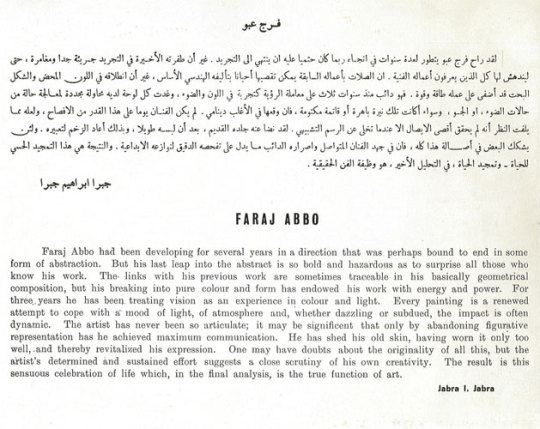
Faraj Abbo’s work can be see across Iraq in places like Baghdad Airport and Ministries across the region. Shatha, one of Faraj Abbo’s daughters also took the artistic path and is now an established painter residing in Qatar.
Feature: Iraqi Painter FARAJ ABBO (1921-1984)
132 notes
·
View notes
Photo
#HappyInternationalWomensDay
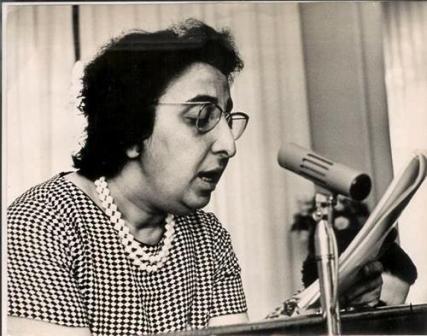
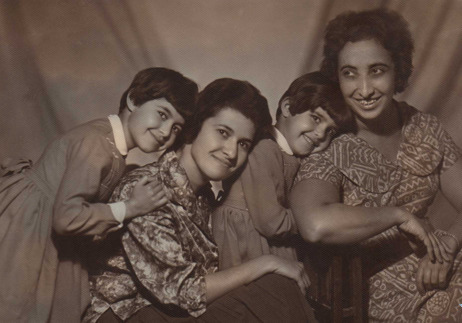

Dr. Naziha al-Dulaimi (1923-2007) was an Iraqi feminist leader who served as Iraq’s Minister of Municipalities in 1959 under the government of Abdul Kareem Qassem, making her the first female minister not only in Iraq’s modern history, but as well as the first female minister across the Arab world. Dr. Naziha attended and graduated from the Royal College of Medicine at the University of Baghdad in 1948, and in that same year she became a full and instrumental member of the Iraqi Communist Party.
In 1952, al Dulaimi cofounded the Iraqi Women’s League and become its first president. With the support of her organization, she was instrumental in the formulation and implementation of the Personal Status Law #188, which is considered one of the most progressive women right laws in the middle east. Personal Status Law #188 is the same law the Iraqi government has been trying to eradicate and instead replace with a religiously conservative, sectarian, and reactionary bill. Al Dulaimi was also an active member of the Iraqi Peace Movement and the World Peace Council.
At the time of the assassination of Abdul Kareem Qassem in 1963, Naziha was travelling between Moscow and Prague, and following the assassination she became an instrumental critic of the new government by joining the Council for Iraq’s Defence that was headed by Iraqi poet Mahmoud Mahdi Al Jawahiri. She returned to Iraq however in 1968, during a period that saw the Ba’athist government trying to reconcile with previous members of the ICP, only to later implement more control over the organization and its eventual banning. Since then, the ICP became a relatively secret organization in which Naziha was also a member. In 1979 she decided to leave Iraq and reside in Europe until the 9th of October 2007, when she passed away in Germany.
Here it is important to note that the ICP went through a massive split after the Ba’athist government took control according to Haifa Zangana, and the communist ideals that they once upheld were completely disregarded, which saw many members abandon the organization, including Zangana herself. This can also be seen in recent post-2003 history with the involvement of the ICP leader in the Interim government installed by the American Occupiers (Paul Bremer), and the organization’s later involvement in the political process of Iraq’s new governmental institutions, which highlights more than anything its abandonment for the revolutionary ideals they once fought for.
426 notes
·
View notes
Photo
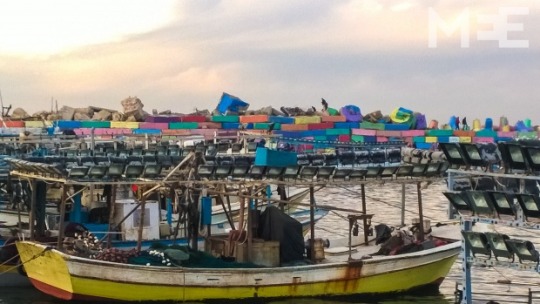
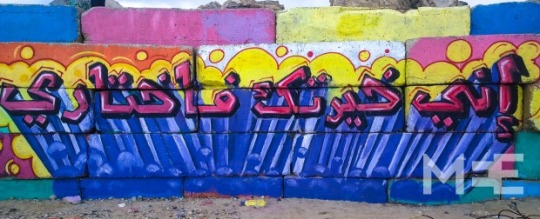
The Painting of Gaza's Seaport
As the sun meets the Mediterranean sea on the horizon of the besieged Gaza Strip, the people of Gaza City like to take strolls to the end of the port, enjoying candy floss and other street food sold along the way.
In recent years, Gaza has seen three major Israeli offensives, the latest of which, Operation Protective Edge, killed over 2,000 Palestinians, including approximately 500 children. The residents of the embargoed coastal enclave are prohibited from leaving by Israel and the al-Sisi regime in Egypt, which recently labelled Hamas a terrorist organisation.
“It’s as far as we can go,” Jehad, a Gazan teenager told Middle East Eye, while walking on the pavement that leads to the end of the blockaded port. “It’s something to do.”
The port has been closed by an Israeli blockade for more than seven years. The blockade reverberates throughout Gaza, causing problems for those who need medical care outside, the students who have been accepted to study at universities abroad, and any resident who has a sense of wanderlust.
Until recently, the dull grey of hundreds of concrete slabs mixed with the more colourful boats used by Gaza’s fishermen to create a scene that was not entirely pleasing to the eye. Now, after an initiative led by the Tamer Institute for Community Education, the concrete outshines the boats.
In January, Tamer began work on a plan to paint the walkway of the port, inviting local artists and youth to work together on the project. Initially, Tamer was only prepared to paint half of the walkway.
“We only bought enough paint - which isn’t cheap - to halfway complete the project,” Ahmed Ashour, the Tamer Institute’s office coordinator in the Gaza Strip, admitted in an interview with MEE. “But the response from the community, youth in particular, was so strong, we knew we had to complete the project.”
Read More @ MiddleEastEye
267 notes
·
View notes
Link
In those hasty last moments, there’s no time to thougtfully pack a suitcase and get your house in order. In most cases, these refugees could grab only a few small items, which grow heavy with nostalgia the longer these people are displaced from their homes.

Anwar Nassir: The drum maker said he had to leave most of the musical instruments he handcrafts behind when ISIS militants advanced on his town; after he ensured his family had safely departed, he was left with just a small motorbike to carry his belongings, including one handmade instrument. “They can take whatever they want, but I pray that they will have left my instruments,” he said
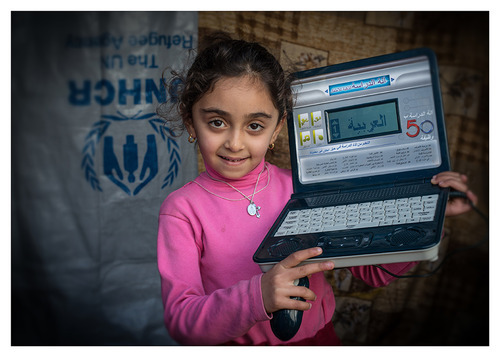
Fatin Atheer: The 6-year-old schoolgirl left her home with nothing but the clothes she was wearing. But, she asked her father every day for a replacement junior laptop like the one she was forced to leave behind. In December, her dad managed to find the same model for sale in a market in Erbil and purchased it for her.
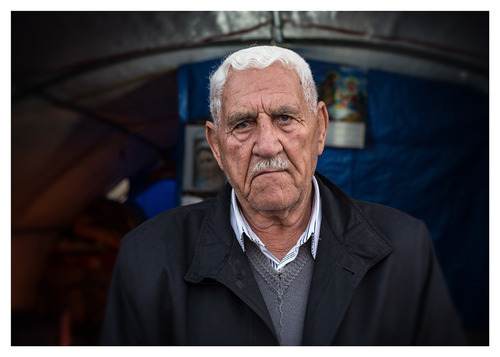
Rafo Polis: The retired teacher said besides his family, he brought nothing but his faith — his most treasured possession
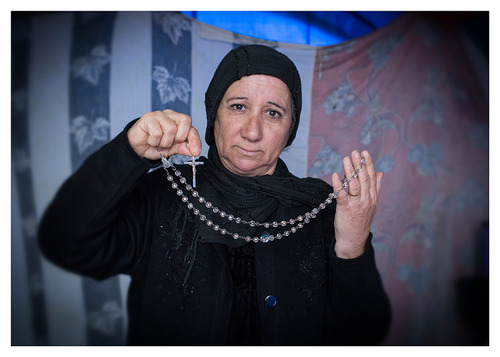
Name unknown: A crucifix was most important to this widowed housewife from Qaraqosh.
888 notes
·
View notes
Photo
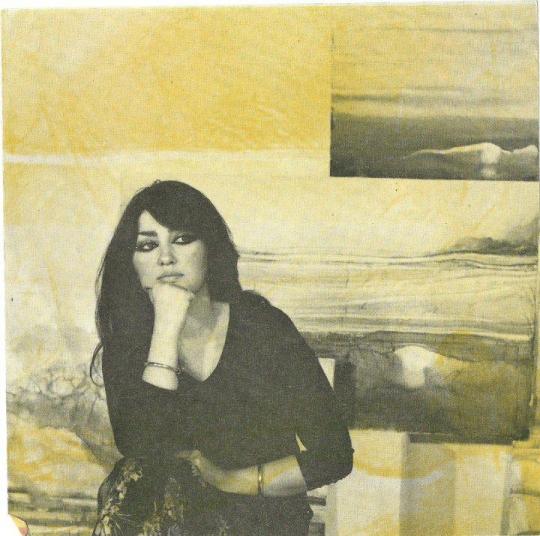

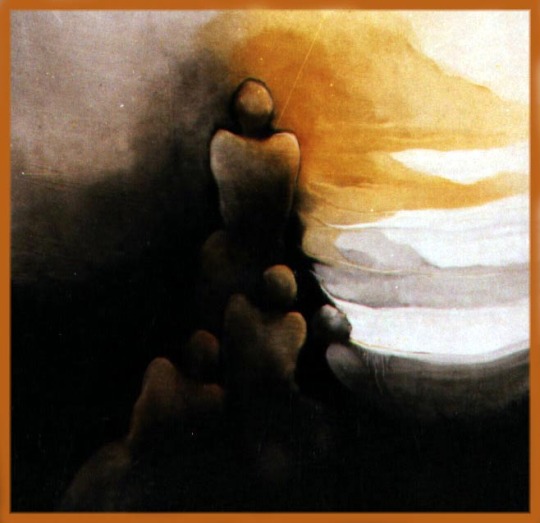

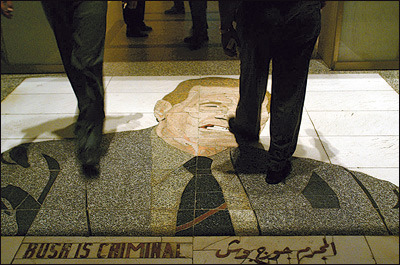
Layla Al Attar (1942-1993) was one of Iraq’s most respected and influential painters in the 1970s and 80s. Layla was murdered alongside her husband by a U.S Missile attack that targeted the house she resided in, which was her sister Suad’s house, and several other civilian homes in her neighbourhood in Baghdad in 1993. Although the attack was considered to be accidental, many people believe the real reason behind the air-strike was due to one of her provocative pieces; which was a mosaic portrait of George H. W. Bush on the floor of the main entrance of Al Rasheed Hotel with the phrase “Bush is Criminal" written beneath it.
The attack was ordered by Bill Clinton in retaliation for an attempted assassination on Bush in Kuwait in 1993. Most recently however, such claims of a targeted attack on Layla’s residence have been refuted by several members close to Layla’s family due to the simplicity of the thought and the improbability of a powerful government targeting a simple artist. This has also been refuted because according to several resources Layla didn’t create that mosaic of Bush, but she was rather a manager at the Arts Institute that commissioned an artist from Diyala/Baqubah to create it.
The details of Layla’s and her husband’s death might never be known, but one thing that should be realized from this event is the amount of disrespect and abasement the American administration had and continues to have until this day to the lives of Iraqis.
#reblogging this because the current circulating post is inaccurate and also ignores the fact that many others lost their lives in it#Iraq
3K notes
·
View notes
Photo
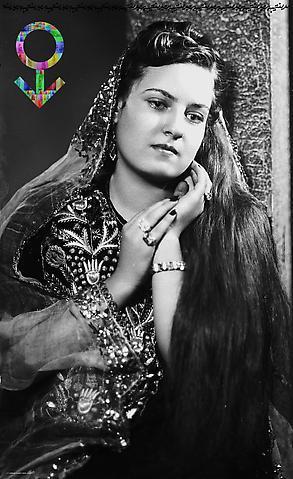
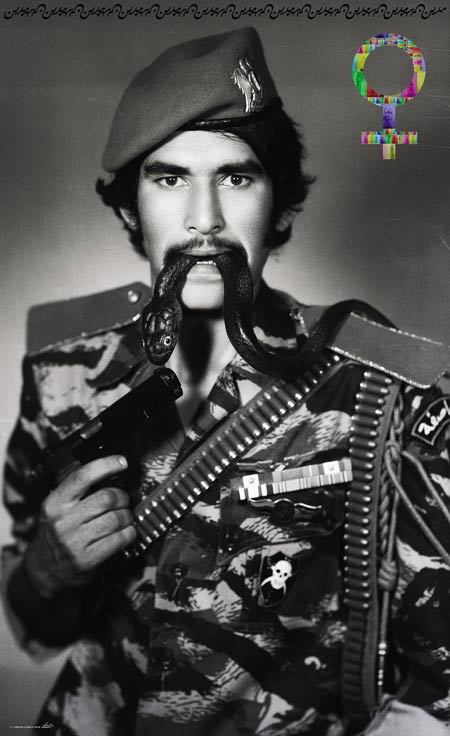
Adam and Eve (2008) - Syrian Artist AMMAR AL BEIK
[Imagine you have just read a sensationalized and romanticized paragraph here about the beauty and captivating nature of black and white photography]. In this larger series of photographs titled "A Small Wedding", the artist seeks to provoke the viewers to think about two main themes; the first theme is how gender has often been framed, and the other is the relation between past and present. With regards to gender, the artist chose to simply identify each figure with the opposite gender symbol, invoking the viewers to think of gender in non-binary and non-static forms, but rather as fluid and does not necessarily fit within prescribed representations of masculinity and femininity that has dominated the public discourse; which is particularly seen in the photograph on the right in which the artist seeks to deconstruct that 'machismo' image that is often associated with objects such as the military uniform and weapons.
Beik most clearly questions the immutability of gender in his portraits of “Adam” and “Eve.” Though the first is mired in fearsome masculinity and the second is doe-eyed and softly feminine, each is demarcated by the wrong gender symbol (x)
As for the second theme, each of those symbols is made of images of ancient statues that the artist has collected and created into this mini-collage, guiding the reader to think of the relationship that might exist between those photographs and the previous theme on gender, in relation to time and how it might affect our reception of this series.
198 notes
·
View notes
Text
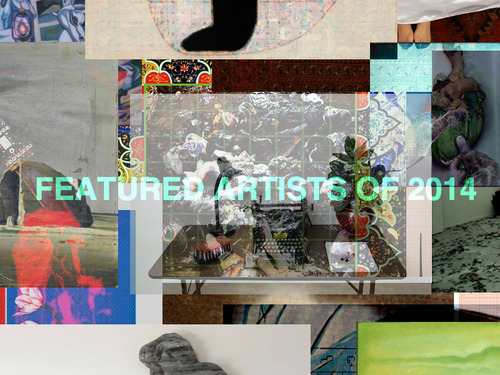
This past year witnessed a much less number of features relative to 2013's list, which can be viewed here, mainly due to the fact that there was an aim to improve the quality and authenticity of the content presented, and the relevant critiques or reflections. It was however a very reflective year personally, and I sincerely hope the artwork featured has helped you cope and grow emotionally, mentally, and artistically. Thank you to everyone for all of your support, and may the new year bring all of us and our homelands peace, freedom, and an end to oppression. Here is a list of the artists re/featured throughout 2014:
Afghan Artist GAZELLE SAMIZAY: Introduction / Work
Egyptian Artist AMAL KENAWY: Introduction / Work
Egyptian Artist IMAN ISSA: Introduction / Work
Egyptian-German Artist SUSAN HEFUNA: Introduction / Work
Indian Artist MONALI MEHER: Introduction / Work
Iraqi Artist ABDULQADIR AL RASSAM: Introduction / Work
Iraqi Artist MAHMOUD SABRI: Introduction / Work
Iraqi Artist MAHOOD AHMED: Introduction / Work
Iraqi Artist NEDIM KUFI: Introduction / Work
Iraqi Artist WASSMA ALAGHA: Introduction / Work
Iraqi Artist SADIK KWAISH ALFRAJI: Introduction / Work
Pakistani Artist AISHA KHALID: Introduction / Work
Palestinian Artist ABDULRAHMAN KATANANI: Introduction / Work
Palestinian Artist LAILA SHAWA: Introduction / Work
Saudi Artist NASSER AL SALEM: Introduction / Work
Syrian Artist AMMAR AL BEIK: Introduction / Work
Yemeni Artist SALWA ALERYANI: Introduction / Work
#feature#end of year list#Art#2014#do I care how trashy that cover photo I made is? NOO#resources#reference#isqineeha#Featured Artists
124 notes
·
View notes
Photo
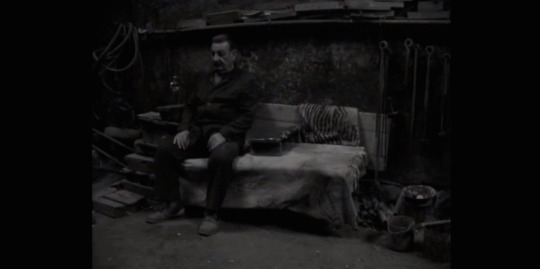
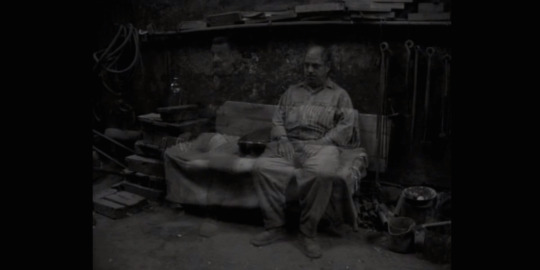
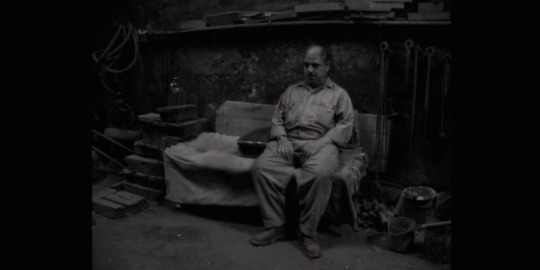
They Were Here (2000) إنهم كانوا هُنا - Syrian Artist AMMAR AL BEIK
This short (8 minutes) black and white film retells the realities, stories, faces, and voices of the workers of one of Damascus oldest locomotive factories that came to existence following a flawed industrialization period. While the film highlights the personal experiences and struggles of those workers who have spent more than 30 years in that environment, Ammar's aim is also to speak on the influence the dictatorship of Hafez Al-Assad had on the sustainability of a space and atmosphere that maximized the stresses on those workers; either through foreign trade agreements that halted the national development projects, or/and through the systematic devaluation and exploitation of the workers themselves by the state.
You can watch the full short-film here
They Were Here has received multiple prizes and special awards in 2001 from international film festivals in Qatar, Tunisia, Egypt, and Italy.
227 notes
·
View notes
Photo

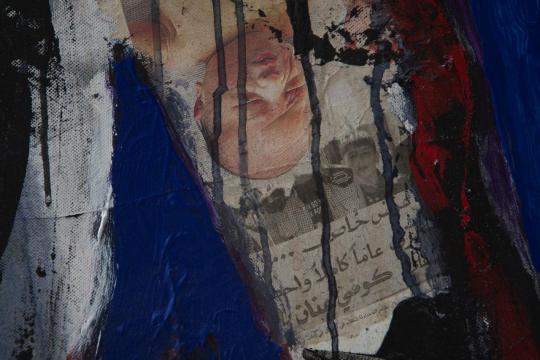
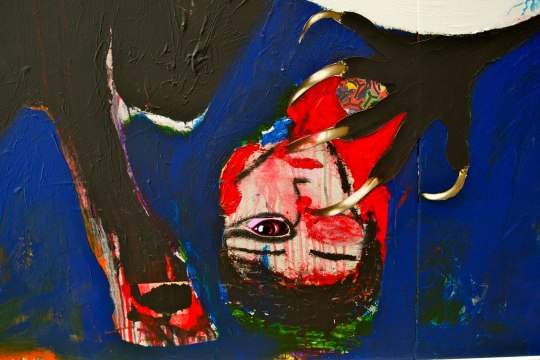
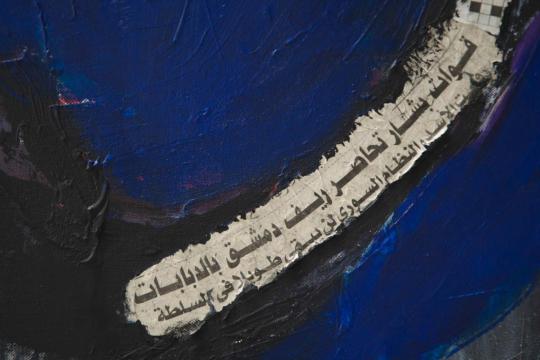
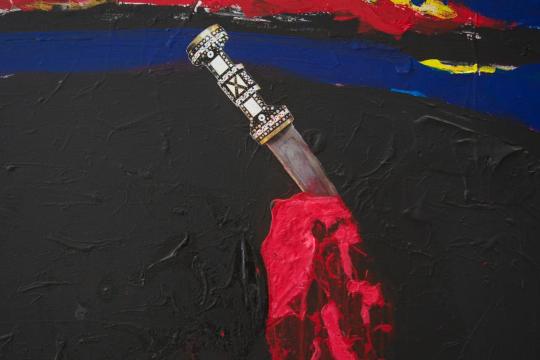
Al Houla Massacre (2012) - Syrian Artist AMMAR AL BEIK
In this Mixed Media Installation Ammar al Beik represents his interpretation of/response to Al Houla Massacre that occurred on 25th of May 2012 in Al Houla region in Homs. The systematic massacre which was carried out by Syrian regime forces left more than 100 people dead, mostly children and women who were executed point blank within their homes. The campaign also included massive shelling and bombing of the region. Here, the artist takes on the family name of the Syrian dictators "Al Assad/The Lion" and literally represents it as lion who was brought down by a stab in the heart from a wounded bull, representing the Syrian people. The lion is also seen made from newspaper excerpts of documentations of the murders committed by the current dictator and his father before him against the Syrian people.
Full View Recommended.
#Syria#Syrian Revolution#Art#Ammar Al Beik#Syrian#Al Houla Massacre#Syrian Art#Painting#Installation
426 notes
·
View notes
Text
FEATURE: Syrian Artist AMMAR AL BEIK
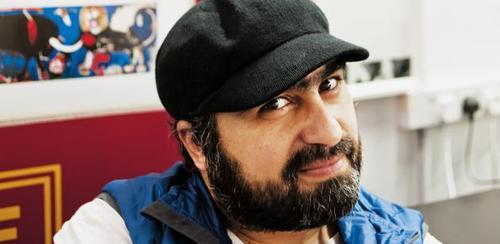
Ammar Al Beik عمار البيك is a Syrian filmmaker and multimedia artist who was born in 1972. Unlike many of the artists previously featured, Ammar was not academically trained in the arts, and is in fact a self taught artist and filmmaker who graduated with a degree in Business Administration from Damascus University. Ammar’s passion for the arts, and in particular photograph, began while working for several years at Hayek Studios, one of Syria’s well-known photography and camera repair shops. Following this experience, Ammar Al Beik was given the opportunity to work under the supervision of Syrian filmmaker Mohammed Malas; one of Syria’s earliest auteur filmmakers. Becoming familiar with all the creative and practical elements of photography allowed him to smoothly enter into the field of filmmaking, which eventually culminated in his first film ‘Light Harvest’ winning the Liege Mayor Rewardat the International Film Festival in Belgium in 2000. This early success became the step stone for several other features and awards at international film festivals, such as the Dubai and Venice International Film Fest.
In 2011, Ammar Al Beik released his first feature film ‘Aspirin and Bullet أسبرين و رصاصة’, which is a 2-hour autobiographical black and white film that follows the conversations and confessions of those souls close to Ammar (check out a scene of this film featured earlier here). Ammar writes about this film:
Aspirin and a bullet is an audio-visual recording full of confession, poetry, pain and cinema. This recording is the film that sets me free from the heaviness of memory and its complexes. My father and my mother, my friend and our mistresses, all sat in front of me to convey about me and them.
What can be noticed throughout his non-film artwork is that the influence of filmmaking process can still be sensed in those still images/objects; such as frames and film negatives. Following the Syrian revolution, Ammar Al Beik’s art began to take an obligatory political and revolutionary turn to support his people’s struggles as an artist, emphasizing the voices that are suffering within Syria and relaying the messages they seek to deliver to the global world, and most importantly to their fellow Syrians abroad. Ammar was able to accomplish that by sharing the images and stories of those people, by sharing relaying their suffering, and by highlighting the brutality of the dictatorial Syrian regime that has been oppressing Syrians for tens of years. Most of these messages were manifested in paintings and collages, such as “Al Houla Massacre” and “The Last Shabih” paintings.
In 2008, the wonderful Syrian artist Youssef Abdelke wrote the following about Ammar:
He is a photographer who comes from another place. Neither traditional subjects tempt him, nor do familiar aesthetics mean anything to him. He rides his thoughts - ideas to take untraveled roads, to his own place.
52 notes
·
View notes
Video
vimeo
The House that My Father Build (2010) ذلك البيت الذي بناه أبي
Iraqi Artist SADIK KWAISH ALFRAJI صادق كويش الفراجي
This extremely moving short (6:00 minute) animation film is part of the larger project featured here earlier that included a massive 6 x 4 meter painting and installation. Here, Sadik Kwaish Alfraji recalls one of the most devastating and emotional events in his life; the passing of his father. Having not been to Baghdad in 20 years, Sadik’s first return to the country and his hometown coincided with the death of his father; an experience that not only made him fully realize the role the diaspora plays in the shaping of his personality and memories, but also one that generated an existential conflict between life and death within his awareness. On this sentimental project, Sadik writes:
Once upon a time:
In the family house, and in my father’s room in particular, which was his guest room and daily sitting area, my feet shook as I entered the room after long years of expatriation. His clothes, which were hanging there in a corner, were the first things I laid eyes on. That was a very intense and emotional moment to me.
This is then what is left of my father??
His kufiyeh “head cover”, agal “headband”, praying beads, and traditional clothing. They were all deeply rooted in his identity and sentiment. They, with his big old collection of coffee pots made part of his dignity, respect and sense of belonging.
They were hanging there, high, tidy and clean, as always, ready to be worn, exactly as he used to hang them himself. They were leveled upright on the wall surrounded by lost ghosts and floating shadows, restless and anxious, pacing the room, swaying on the beat of his strong, deep voice which filled the room, together with the smell of fresh roasted coffee and the tunes of old sad Mawaweels.
This is then what is left of my father!
A few Objects,
Hundreds of memories,
A grieving love which still fills my mother’s eyes,
And many unfinished tales.
Continue reading the artist’s emotional statement here.
400 notes
·
View notes
